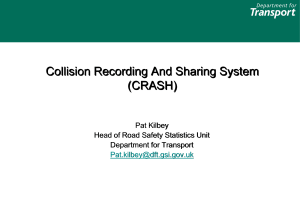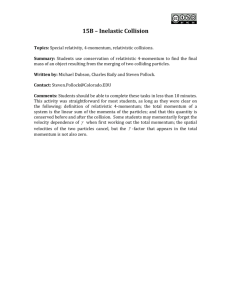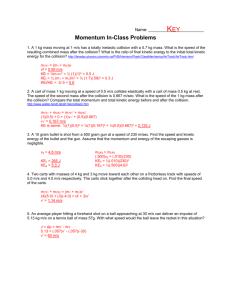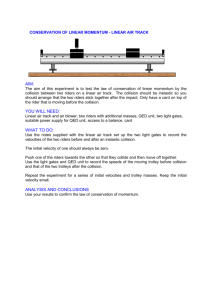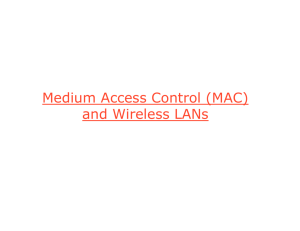Solution
advertisement
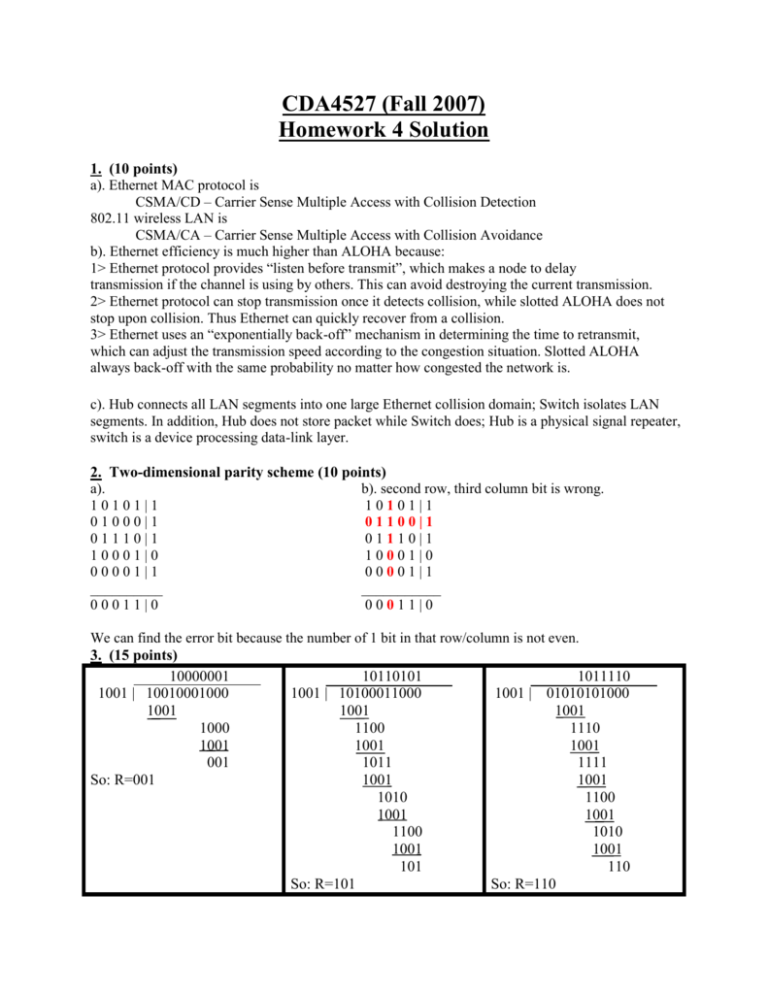
CDA4527 (Fall 2007)
Homework 4 Solution
1. (10 points)
a). Ethernet MAC protocol is
CSMA/CD – Carrier Sense Multiple Access with Collision Detection
802.11 wireless LAN is
CSMA/CA – Carrier Sense Multiple Access with Collision Avoidance
b). Ethernet efficiency is much higher than ALOHA because:
1> Ethernet protocol provides “listen before transmit”, which makes a node to delay
transmission if the channel is using by others. This can avoid destroying the current transmission.
2> Ethernet protocol can stop transmission once it detects collision, while slotted ALOHA does not
stop upon collision. Thus Ethernet can quickly recover from a collision.
3> Ethernet uses an “exponentially back-off” mechanism in determining the time to retransmit,
which can adjust the transmission speed according to the congestion situation. Slotted ALOHA
always back-off with the same probability no matter how congested the network is.
c). Hub connects all LAN segments into one large Ethernet collision domain; Switch isolates LAN
segments. In addition, Hub does not store packet while Switch does; Hub is a physical signal repeater,
switch is a device processing data-link layer.
2. Two-dimensional parity scheme (10 points)
a).
b). second row, third column bit is wrong.
10101|1
10101|1
01000|1
01100|1
01110|1
01110|1
10001|0
10001|0
00001|1
00001|1
__________
___________
00011|0
00011|0
We can find the error bit because the number of 1 bit in that row/column is not even.
3. (15 points)
10000001
10110101
1011110
1001 | 10010001000
1001 | 10100011000
1001 | 01010101000
1001
1001
1001
1000
1100
1110
1001
1001
1001
001
1011
1111
So: R=001
1001
1001
1010
1100
1001
1001
1100
1010
1001
1001
101
110
So: R=101
So: R=110
4. (15 points)
5. (15 points)
a). the probability of second collision (given that two nodes have collided once):
After the first collision, each node goes on exponential backoff by choosing a random number K
from {0,1}. So the second collision will happen if two nodes choose the same number K.
Both choosing K=0 has prob.=0.5*0.5=0.25. Both choosing K=1 has prob.=0.25. Therefore,
the second collision probability Psecond= 0.25+0.25=0.5.
b). the probability of three consecutive collisions (given that two nodes have collided once):
This event happens when these two nodes collide for both the second attempt and the third
attempt. The probability of the second collision is Psecond=0.5 as shown in a).
After the second collision, each node randomly chooses K from {0,1,2,3}. So the third
collision happens when two nodes choose the same K---this probability is:
Pthird= 0.25*0.25 + 0.25*0.25 + 0.25*0.25 + 0.25*0.25 = 0.25
Therefore, the probability of three consecutive collisions is:
Psecond * Pthird = 0.125
6. (10 points)
802.11b: 2.4-2.485GHz,
802.11g: 2.4-2.485GHz,
802.11a: 5.1-5.8GHz,
11Mbps
54Mbps
54Mbps
Wireless LAN MAC protocol does not use “collision detection” because:
1). Difficult to detect collision signal due to weak received signal (fading).
2). Cannot sense all collisions in some case due to hidden terminal.
3). Cannot listen for collision signal when sending at the same time.
7. (10 points)
DIFS --- Distributed Inter-frame Space. After a channel is sensed idle, wait the short time interval
(DIFS) to make sure the channel is really idle before transmitting a frame.
SIFS --- Short Inter-frame Spacing. When a destination station receives a frame that passes the CRC
check, it waits the short time interval (SIFS) and then sends back an ack frame. SIFS is used to for
the similar reason as the DIFS --- make sure the channel is really idle before transmitting.
RTS --- Request to Send. Use it to reserve access to channel.
CTS --- Clear to Send. When the receiver receives the RTS, it broadcasts a CTS to give the sender
explicit permission to send frame and also instructs others not to send for the reserved duration
requested in the RTS.
Wireless MAC protocol uses RTS/CTS because wireless protocol cannot detect collision. Thus if
each node sends out a large frame and collides with others, the frame will keep going and waste a lot
of bandwidth resource. RTS and CTS are very shot frame so the collision cost is relatively smaller.
8. (15 points)
A frame without data is 32 bytes long. Assuming a transmission rate of 11 Mbps, the time to
transmit a control frame (such as an RTS frame, a CTS frame, or an ACK frame) is (256
bits)/(11 Mbps) = 23 usec. The time required to transmit the data frame is (8256 bits)/(11 Mbps)
= 751 usec
DIFS + RTS + SIFS + CTS + SIFS + FRAME + SIFS + ACK
= DIFS + 3SIFS + (3*23 + 751) usec = DIFS + 3SIFS + 820 usec






